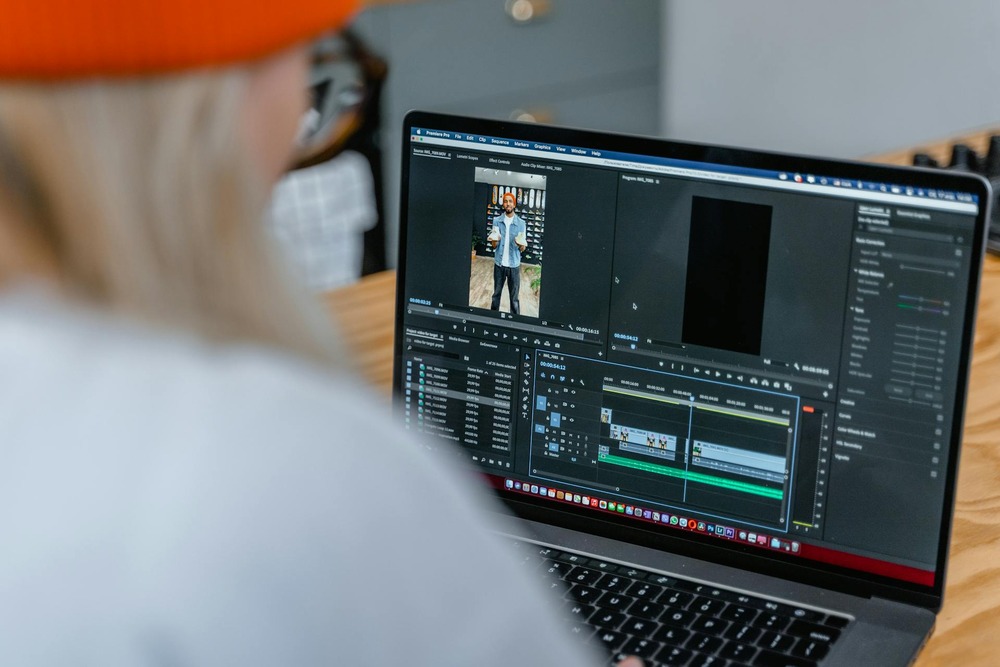
How to Boost Quality in Subtitle Localization Projects
Subtitle localization is an effective way to make content more accessible and empowering across global audiences. If you want to keep your message clear across languages, there are key things to keep in mind.
In this article, you'll discover key tips that will put you on a path toward increasing the quality of your subtitle translations, ensuring accurate and engaging subtitles every time.
Are Subtitles the Same as Captions?
Many people think subtitles and captions are just two terms for the same thing. Sure, both show text on screen to help viewers follow what’s going on, but if you’re working in localization, the differences actually matter—and overlooking them can lead to confusion or poor viewer experiences.
What Are Captions?
Captions were made with accessibility in mind, specifically for people who are deaf. They go beyond just showing dialogue; they describe the full sound environment. Consider sounds such as [door creaks], [laughter], or [music fades in], all of which are part of what good captions relay.
Captions are usually presented in the same language as the spoken audio to allow viewers to follow along without missing any audio cues. In some instances, these captions are encoded directly in the video (open captions), and other times they are encoded separately and only appear when users enable them (closed captions).
Captions are all about accessibility. Their goal is to represent all the audio elements of a scene through text, capturing not just dialogue but every important sound. If a phone rings or someone whispers something important off-screen, a good caption will tell you about it.
What Are Subtitles?
In contrast, subtitles are generally geared toward audiences who can hear the audio but do not understand the language spoken, as they offer translated versions of the spoken content into a different language and occasionally include written translations of on-screen items like signs or mobile phone messages as part of the subtitle localization process.
The great thing about subtitles is that they are often optional—you can select or deselect subtitles on your streaming platform based on your needs. Typically, subtitles without captions won’t include non-dialogue/auditory descriptions in the subtitle context.
Read more: Subtitle Localization Workflows: From Project Planning to Delivery
So, Why Does This Matter?
Creating or managing open captioning and subtitles around the world is not only helpful—it’s essential. Choosing incorrectly can lead to confusion or, worse, breakdowns in communication. For example, if a viewer expects translated subtitles but instead sees captions in the same language, the experience becomes frustrating and ineffective.
Technically speaking, subtitles have more to do with access to languages for the reader, while captions are more about access to audio for the viewer. This distinction becomes even more relevant in subtitle localization, where linguistic accuracy and cultural adaptation are entwined.
Which One Should You Use?
Ask yourself: who is your target audience? If you're creating content for a multilingual audience across different regions, subtitles (with proper subtitle localization) are your best bet. If your priority is making your content accessible to those with hearing impairments, go with captions.
In some cases, you might even need both. Many modern streaming platforms offer multiple options. Take Netflix, for example, which usually offers content in 5–7 subtitles in various languages depending on your location. This type of flexibility creates a much broader inclusive experience in general.
Practical Tips for Improving Subtitle Localization Quality for Multilingual Audiences

Subtitle localization is a crucial step in addressing language barriers and delivering a meaningful content experience to international audiences. How do you ensure the subtitle files created by your team are viable for multiple audiences? Here are several actionable tips to help you elevate the quality of your subtitle projects:
1. Ensure Translation Accuracy
There can be no compromise when it comes to accurate translation. The subtitle translator needs a strong grasp of both the source and target languages, along with their respective cultures, including connotations, idioms, slang, and tone of speech.
For creative content or marketing videos, word-for-word translation won’t suffice. Instead, translators must be creative and culturally sensitive to maintain authenticity and make the content relatable to the target audience.
2. Maintain Proper Timing and Sync
Subtitles should not appear too early or linger on screen after the dialogue has been delivered. Viewers should be able to read the subtitles and watch the scene simultaneously without having to choose between them.
This is where using SRT files becomes helpful. These files contain not only the translated text but also precise timestamps, allowing subtitles to match the rhythm of the speech. Many subtitle localization professionals work directly from the video file to sync every line of dialogue with the right moment on screen. When done right, viewers will forget they’re reading at all.
3. Use Readable Typography and Proper Positioning
Even the best subtitle localization can fall flat if it’s hard to read. Typography matters—ensure the text is large enough to be read from a distance, especially on TVs or projectors, and has good contrast against the background.
Positioning is also key. Subtitles should typically appear at the bottom center of the screen, leaving a border to avoid obscuring important visual parts of the video. A clean, readable design enhances comprehension and viewer comfort.
4. Localize Measurements and Date Formats
Measurements and date formats are often overlooked in subtitle localization but can disrupt the viewer’s experience. Audiences may lose their train of thought when encountering unfamiliar units like miles, gallons, or pounds.
For a German audience, for example, it’s best to convert "12 ounces" to "340 grams" or "3 miles" to "4.8 kilometers." Germany, along with most of the world, uses the metric system, so conversions clarify the message and avoid misunderstandings.
Similarly, date formats vary. In the United States, dates follow a month-day-year style, while much of the world uses day-month-year. Instead of "October 12, 2025," subtitles for a German audience should read "12 October 2025."
5. Translate Idioms and Cultural Expressions with Care
Literal translations often fail, especially for idioms and culturally specific phrases. These expressions seldom make sense when translated word-for-word, leading to confusion or nonsense.
For example, the French idiom “mettre son grain de sel” literally means "to add one’s grain of salt." Translated directly, it might confuse English viewers. The actual meaning is "to give an unsolicited opinion," and a skilled translator will adapt it to convey this intent naturally.
6. Proofreading and Quality Control
Even small mistakes in subtitling can have a big impact. A rigorous quality control process is critical, encompassing more than just grammar or spelling checks. It includes reviewing translation accuracy, timing, formatting, and how naturally the subtitles read on screen. Without this step, even a perfectly translated file may fail to convey the intended meaning to viewers.
Peer review or having a second set of eyes check the subtitles before delivery can catch timing inconsistencies or awkward phrasing that the original subtitler might miss due to familiarity with the material. A fresh perspective polishes the final product.
Gathering feedback from clients or target viewers, when possible, is also valuable. What seems “correct” technically may not resonate across all audiences. Continuous improvement is key to maintaining professional standards in subtitle localization.
7. Collaboration with Client
Understanding the project’s goals, tone, specific terminologies, and preferred branding before starting is essential to avoid mistakes and ensure the final product aligns with the client’s vision.
Regular check-ins throughout the process can make a significant difference. If a line of dialogue is culturally tricky or has multiple meanings, reaching out for clarification demonstrates professionalism, not uncertainty. It’s better to ask questions early than to make incorrect assumptions.
Good collaboration also means being open to feedback and flexible during revisions. A subtitler who listens and responds constructively can turn a basic project into a long-term partnership.
Read more: 8 Subtitle Localization Tips for Seamless Video Adaptation
Final Thoughts
Producing high-quality subtitle localization is about creating an experience that feels natural, culturally relevant, and effortlessly timed. Whether it’s translating idioms, perfecting subtitle timing, or fostering strong client communication, attention to detail is paramount.
Ready to take your global content to the next level? Digital Trans Asia specializes in subtitle localization for multilingual audiences, ensuring your message resonates wherever it’s watched. Visit https://digital-trans.asia/ to explore our services, or contact us today to get started!